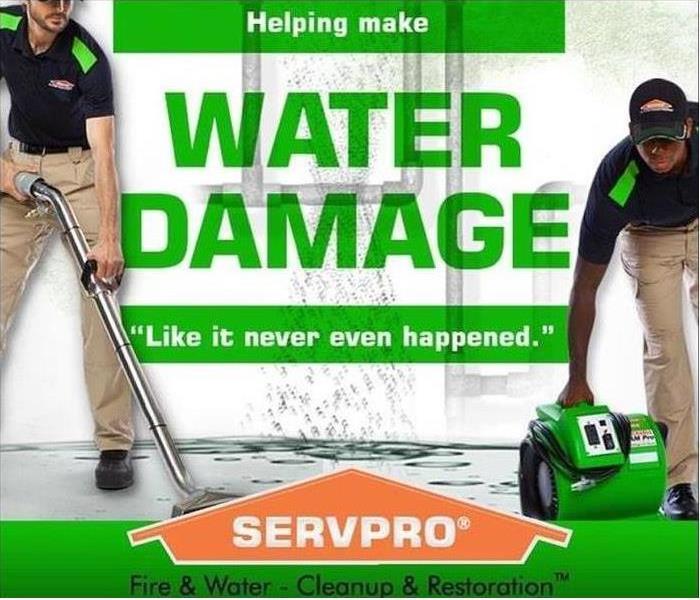When It Floods: What To Do and What To Avoid
6/19/2018 (Permalink)
When your home floods, whether from a storm or a broken pipe, your first instinct is probably to start getting rid of water and cleaning up. To makes sure the repair process goes smoothly, however, there are a few steps you should follow. The first priorities are safety and documentation, and then you can call flood restoration specialists to lead in the cleanup efforts.
Safety First
Water in the home can render it temporarily uninhabitable, so there are a few things to look for when you return:
• Damage to water, sewer or power lines
• Warped surfaces, such as floors or walls
• Damaged foundation
• Visible cracks or holes in any part of your home’s structure
Try to avoid wading in standing water, as it could be electrically charged. Just in case, it is a good idea to wear knee-high rubber boots to absorb possible shocks. Even if the water looks clean, avoid contact with your skin, as it could be contaminated, especially if you suspect it might have come from a broken pipe or sewer line.
Document Damage
Your insurance adjuster is going to need to know the extent of the damage. Be vigilant about keeping your cell phone charged so you can take pictures for the report. Avoid cleaning before you document the damage, or your settlement could be smaller because the problem will seem smaller than it is. Once you have adequate documentation, call your insurer. The earlier you file a claim, the sooner you can get the money for repairs or reimbursement.
Cleanup
Rather than attempt to clean up the water yourself, it is a good idea to hire a professional. Experienced restoration specialists can help locate the cause of the problem, whether the flooding came from groundwater or a broken pipe. They also know how to overcome water damage so that you do not experience mold or mildew problems later





 24/7 Emergency Service
24/7 Emergency Service
